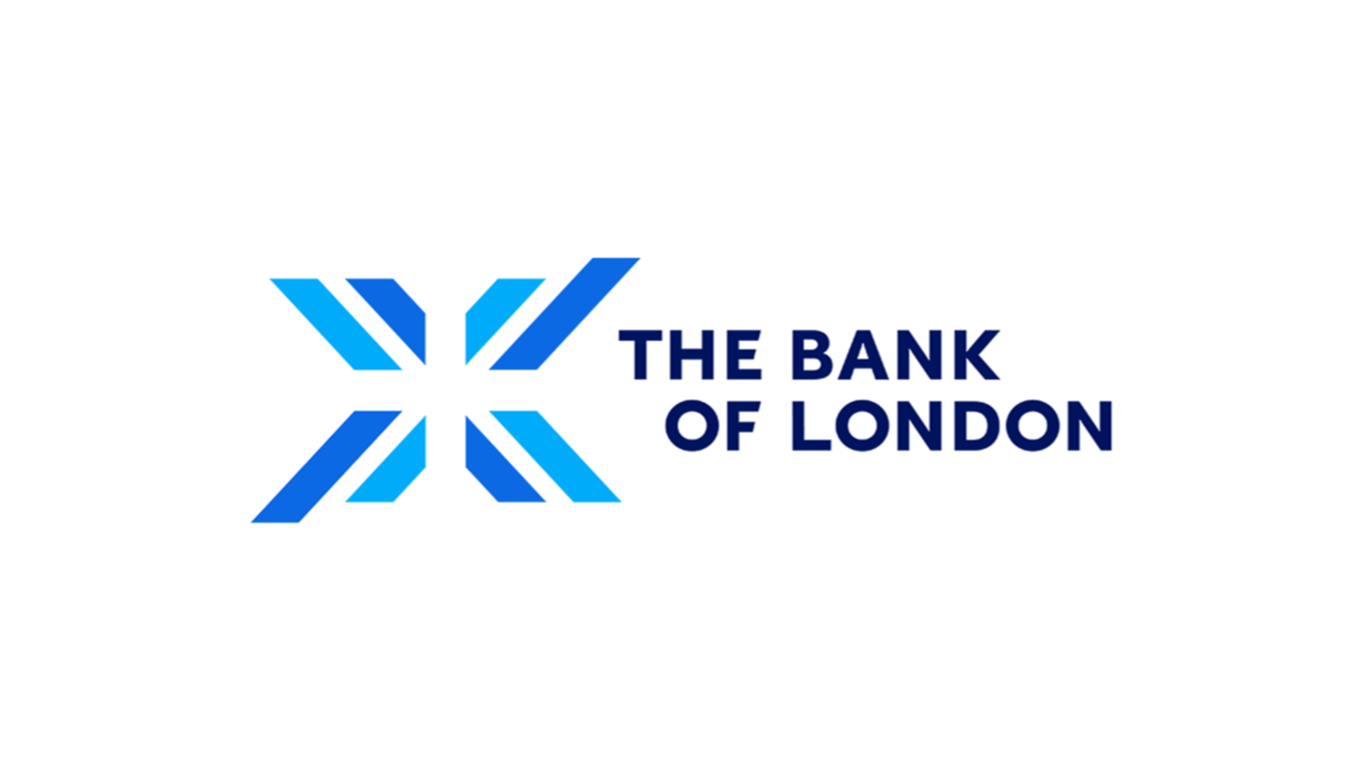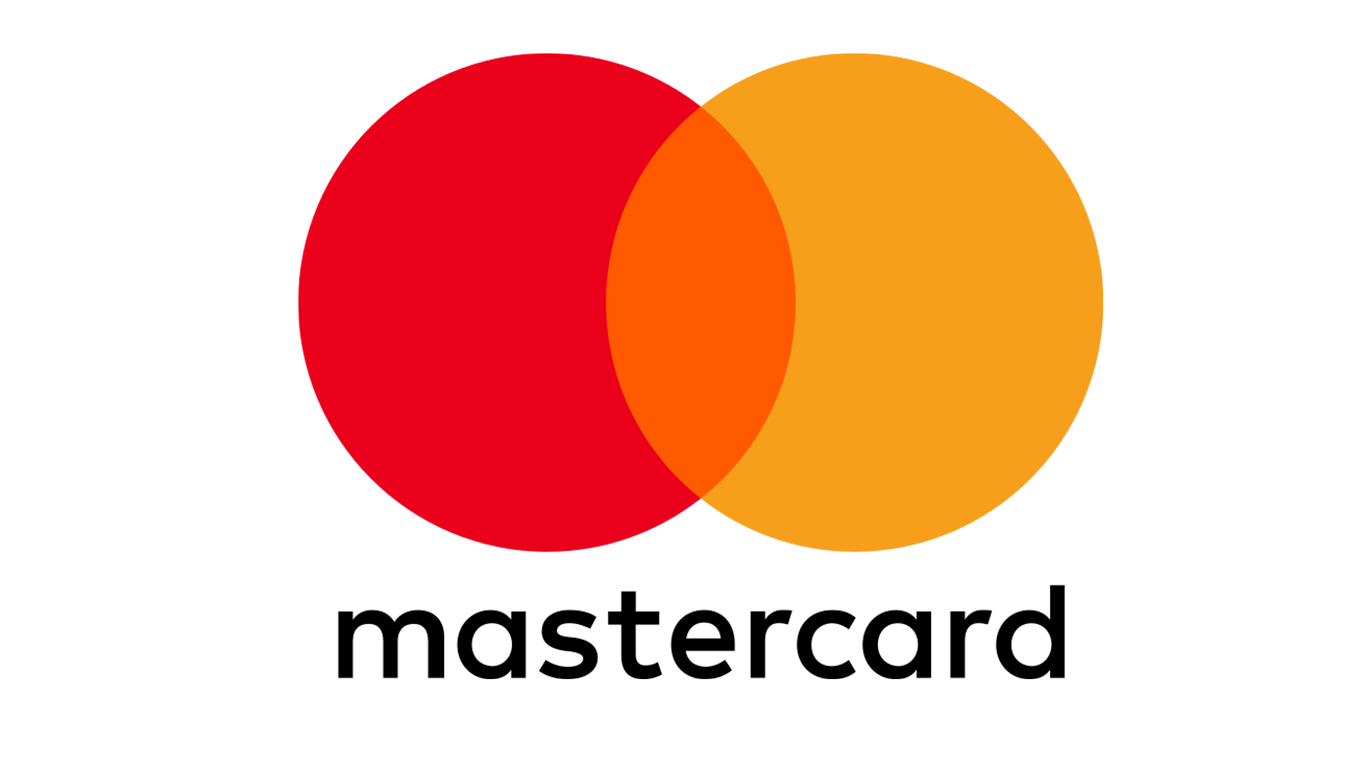Published
- 09:00 am

The Bank of London today announced the appointment of Frankie Woodhead as Chief Product Officer, effective immediately. In his role, Frankie will oversee product vision, development and delivery across the UK Bank and Group.
Frankie joins the bank with 15 years of senior leadership experience across business, corporate and retail banking in global tier one financial services at Barclays and cloud-native digital banking technology provider 10x Banking. His roles at Barclays included product director positions spanning SME lending, growth, authentication, payments, and customer servicing. He joins The Bank of London from 10x, where he was a Vice President and General Manager.
“The Bank of London’s vision is to change the face of banking by making it safer for its clients,” said Anthony Watson CBE, Group Chief Executive and Founder of The Bank of London. “We’re delighted to welcome Frankie to our team. His extensive experience and forward-thinking mindset will make a major contribution to bringing our vision to life. His appointment also comes at an exciting time as we push further into our home market and prepare to take The Bank of London to new regions outside the UK.”
Frankie commented: “I’m honoured to take on this role at such a key time for the industry and the growing bank. Having seen the direct client and customer impact of financial crises, it’s clear the world of banking needs to be fundamentally changed to be safer and more transparent.”
He added: “Not lending, investing or leveraging any deposits makes The Bank of London a safer home by design for client and customer money. The bank has a bold vision and a product roadmap to completely change the banking landscape. I look forward to working with the team in delivering it.”
Related News
- 02:00 am

Bank payment company GoCardless and leading international payment service provider and UK & Europe direct bank card acquirer Ecommpay have announced a partnership which will see the latter add direct debit to strengthen its payment offering.
Thanks to GoCardless Embed, a white-label integration, Ecommpay merchants will soon be able to tap into direct debit capabilities in over 25 countries within a platform they already know and trust. This will help them grow in their existing markets while providing the ability to expand into new verticals and use cases where bank payments are preferred.
With over a decade’s worth of experience in online payments, Ecommpay provides access to more than 100 alternative payment methods and mass payouts, as well as a sophisticated Open Banking payment solution via a unified proprietary platform. This partnership will enable the addition of direct bank payments to Ecommpay's comprehensive suite of payment options.
The news comes as a new GoCardless study indicates that payment service providers (PSPs) must continue to innovate to stay competitive and boost customer retention. Increasing payment choice was cited as a top priority: 31% of merchants surveyed would be willing to pay more for a wider range of payment methods. Over a third of businesses (35%) want their PSP to offer direct debit and more than a quarter (27%) want them to offer Open Banking or other bank payment options.
Arthur Ribakovs, Director of Financial Partnerships at Ecommpay, said: “At Ecommpay, we are always striving to push the boundaries of fintech and payments innovation. We are therefore very excited to enable card payments, Open Banking and now direct debit transactions all together through our own unified platform, making us even better suited to fit our merchants’ needs and wants.
We are also continuing to form strong partnerships to offer the very best service for our merchants, whether that’s expanding our Open Banking offering or now partnering with GoCardless for direct debit capabilities. Through Embed’s single integration, we can enhance our market-leading payments suite and continue to meet and exceed our customer’s expectations for payment choice internationally.”
Deepak Colluru, Director of Product Management for GoCardless Embed, said: “Gaining access to a wide range of payment methods is now a top priority for businesses, so PSPs need to keep up. By adding direct debit to its platform and diversifying payment choice, Ecommpay is staying ahead of the curve.
“We’re proud to support Ecommpay through GoCardless Embed, increasing its speed-to-market as it broadens its offering. And we’re even more excited to bring the benefits of bank payments to thousands of businesses, helping them to win and retain customers, save time and money, and get paid on time.”
Ecommpay’s new direct debit product, enabled via white-label integration of GoCardless Embed, will be available in Q1 2024.
Related News
- 03:00 am

Yedpay, Hong Kong's leading payment technology company, collaborates with Mastercard to break tradition and pioneer the innovation of the next-generation payment industry with 'One Touch' technology. This technology aims to optimize the sequence of cash flow from collection, and payment to settlement for businesses, providing a new experience for real-time cash flow.
Related News
- 09:00 am

Today, Juni, the financial platform built for digital commerce, expands its Capital product offering with Inventory Financing for ecommerce businesses. The new product follows the launch of Juni’s media financing product earlier this year that allows businesses to ‘buy media, pay later’ (BMPL). The latest addition is part of Juni’s efforts to build a Capital product that is tailor-made for the unique financial needs of e-commerce businesses.
Juni’s research shows that more than 50% of their customers' cost base is attributed to inventory, by far their biggest expense. An ideal e-commerce inventory turnover ratio is 4-6 times per year, however, some businesses may purchase inventory fewer times a year, leading to cash flow challenges with a significant delay in seeing a return on investment, sometimes up to 6 months.
Juni’s Inventory Financing product aims to solve this by offering customers extended payback terms of up to 120 days with fixed monthly fees as low as 3%, while improving liquidity, cash flow forecasting, and margins on larger inventory orders from EU, China & US suppliers.
The Inventory Financing product will sit within Juni’s Capital for Invoices offering, alongside Media Financing (BMPL). This means that once an e-commerce business has applied and been approved for Juni Capital, it will have one credit line that it can allocate to either inventory or media invoices as it see fit.
Juni is also introducing a new feature called split payments. This means that with Juni Capital for Invoices, ecommerce businesses can split supplier payments between debit and capital, gaining financial control and having the option to pay in a way that suits their cash flow needs.
“We’re excited about enabling e-commerce businesses to free up capital so they can invest in further growth. By having less money tied up in large inventory orders, they reduce risks associated with sales seasonality” says Samir El-Sabini, CEO and Co-founder of Juni. “While it is difficult for businesses to influence their logistical lead times for inventory, payment terms are easier to adapt, and using our inventory financing enables them to negotiate more competitive offers from suppliers.”
This launch marks another milestone in Juni’s journey to realize its vision of becoming a banking alternative for digital commerce businesses, strengthening its core banking offering.
“Inventory management plays a critical role in growing a sustainable and profitable e-commerce business,“ says Shelley Havemann, Senior Director of Product at Juni. “We know that our inventory financing product will unlock even more value for our customers, increasing control and visibility over their cash flow. And with our split payments feature launching later this month, we’re giving them even more flexibility to manage their liquidity.”
Juni Capital for invoices is available to e-commerce companies based in Europe, with inventory financing being available upon eligibility. Juni Invoices is expected to launch in the UK next year.
Related News
- 01:00 am

Financial Software & Systems Pvt Ltd (FSS), a leading global provider of payments technology solutions, today announced that it has recently launched its IoT & AI/ML-enabled ATMs in India.
ATM operators have long been struggling with thin margins while facing multiple challenges in managing an ATM site, and enabling the ATMs with cutting-edge technologies of IoT (Internet of Things), AI (Artificial Intelligence) and ML (Machine Learning) is expected to resolve 60% of ATM Issues remotely without any manual intervention.
FSS have been one of the leading managed services providers in the country for the last 17 years. Currently, the company services 25,000 ATMs for many private and public sector banks across India. FSS has already deployed IoT solutions for one of India’s leading private banks
The present ATM monitoring solutions are not able to identify or predict the point of failure, causing a delay in issue resolution. With this digital transformation, FSS will offer significant efficiency gains in areas of fault prediction, detection, and remote resolution.
Speaking on this development, Mr. V Balasubramanian, CEO, FSS CashTech, said, “ATMs play a pivotal role in India's cash-driven economy. However, minimal technological advancements have been made to better the ATM landscape and operators are finding it difficult to keep this business profitable. With this technological initiative, we aim to revitalize the ATM industry in India by optimising ATM operations with tech and automation, resulting in enhanced ATM management, improved efficiency, increased uptime, and better customer experience.”
FSS is committed to the advancement of ATM services and management and digital transformation. Through collaboration with banking partners, FSS seeks to enhance security, streamline operations, and improve the ATM experience for all stakeholders. At present, FSS manages and operates 25,000 ATMs across the country, processing 7 billion transactions annually for 20 banks with its proprietary Transaction Switching Infrastructure. FSS recently launched its SaaS platform BLAZE, an advanced payments technology platform, designed to meet the diverse needs of banks and financial institutions and expects it to generate 70% of the company’s revenue by FY26.
Related News
- 04:00 am

GoldenSource, the leading independent provider of Enterprise Data Management (EDM) and Master Data Management (MDM) solutions, has created a first-of-its-kind market risk factor data standard. This provides sell-side financial market institutions with a standardized risk factor typology to capture and store market rates and volatilities, link these to pre-defined curve and surface structures and allow for standardized dimensions for risk and finance data aggregation and reporting.
The new standard, which GoldenSource calls Curve Master Definitions, seeks to provide investment banks with a single risk factor taxonomy for the market rates required to price over-the-counter (OTC) derivatives, including the storage and aggregation of industry-standard conventions required for quantitative processes. This includes yield curve building, volatility surface calculations, and industry-standard interpolation methodologies. The taxonomy will allow financial market institutions to take a common approach to reviewing and conforming to the trading book processes that are prerequisites for the Fundamental Review of the Trading Book (FRTB) framework, due to be implemented on 1 January 2025 in most jurisdictions. These trading book processes include independent price verification, bid-ask reserving, marking to model, adjustments for illiquid positions, stress testing, internal model reviews, and interest rate risk in the banking book, among others.
Curve Master Definitions offers a single taxonomy for derivative pricing market risk factors. Without such a taxonomy, banks are presented with significant challenges in their efforts to comply with market risk regulations and auditability requirements, including ensuring consistency of approaches between trading book processes, difficulties linking risk factors to trades for the assessment of the ‘modellability’ of risk factors, valuation reporting integrity, market risk reporting integrity, and market risk exposure aggregation.
By providing a structured and consistent approach to defining market risk factors, GoldenSource’s Curve Master Definitions will offer users a more holistic view of their risk factors, as well as an accelerated approach for implementing the core GoldenSource Curve Master module, designed to centralize and validate the market rates for curves and surfaces that form the set of a bank’s market risk factors. Beyond helping firms to align their FRTB and core trading book processes, having a standard taxonomy for market risk factors will allow firms to standardise their approaches to regulatory requirements, such as stress testing, internal model reviews and interest risk in the banking book.
The development of GoldenSource’s Curve Master Definitions was led by the company’s head of market data, quant and risk solutions, Charlie Browne, who is completing a PhD on the merits of taking a taxonomic approach to risk factors in derivative pricing.
Commenting on the launch, Browne said: “This innovation has the potential to be impactful for the banking sector, including the regulators and central banks who are responsible for its oversight. In addition to transforming the way market participants approach trading-book process alignment, the taxonomy could act as a useful tool for regulators and auditors for ensuring that there is commonality between the data set that underlies all trading book processes, namely market rates.”
Related News
- 07:00 am

The Consumer Financial Protection Bureau (CFPB) is proposing to supervise larger nonbank companies that offer services like digital wallets and payment apps. Driven largely by Big Tech and other large technology firms, digital payment apps and wallets continue to grow in popularity, but many of the companies are not subject to CFPB supervisory examinations. The rule proposed today would ensure that these nonbank financial companies – specifically those larger companies handling more than 5 million transactions per year – adhere to the same rules as large banks, credit unions, and other financial institutions already supervised by the CFPB.
"Payment systems are critical infrastructure for our economy. These activities used to be conducted almost exclusively by supervised banks,” said CFPB Director Rohit Chopra. "Today's rule would crack down on one avenue for regulatory arbitrage by ensuring large technology firms and other nonbank payments companies are subjected to appropriate oversight."
Digital applications now help millions of people to send money to friends and family, as well as to help them make a variety of consumer retail payment transactions. These digital applications have a share of ecommerce payments volume that is similar to or greater than traditional payment methods, such as credit cards and debit cards. Such applications also have gained a significant volume of in-person retail spending. Amid growing merchant acceptance of general-use digital consumer payment applications, consumers with middle and lower incomes use digital consumer payment applications for a share of their overall retail spending that rivals or exceeds their use of cash. However, complaints about these applications and the companies that run them have been rising in recent years.
Big Tech and other companies operating in consumer finance markets blur the traditional lines that have separated banking and payments from commercial activities. The CFPB has found that this blurring can put consumers at risk, especially when the same traditional banking safeguards, like deposit insurance, may not apply. Despite their impact on consumer finance, Big Tech and other nonbank companies operating in the payments sphere do not receive the same regulatory scrutiny and oversight as banks and credit unions. While the CFPB has enforcement authority over these companies, the CFPB has not previously had, inside many of these firms, examiners carefully scrutinizing their activities to ensure they are following the law and monitoring their executives.
The proposed rule would subject larger nonbank digital consumer payment companies to the CFPB’s authority to conduct examinations, helping to ensure consistent application of federal consumer financial laws across the marketplace. Specifically, the proposed rule would help ensure these large nonbank companies:
- Adhere to applicable funds transfer, privacy, and other consumer protection laws: The CFPB would be able to supervise larger participants for compliance with applicable federal consumer financial protection laws, which includes applicable protections against unfair, deceptive, and abusive acts and practices, rights of consumers transferring money, and privacy rights.
- Play by the same rules as banks and credit unions: The CFPB’s supervision of these large companies can foster a level playing field with depository institutions. Greater supervision of nonbanks in this market would ensure federal consumer financial protection law is enforced consistently between non-depository and depository institutions in order to promote fair competition.
Today’s proposed rule, if finalized, would be one part of the CFPB’s efforts to carefully monitor the entry of large technology firms, including Big Tech giants, into consumer financial markets. In 2022, the CFPB warned Big Tech firms that they must adhere to federal consumer financial protection laws when using sophisticated behavioral targeting techniques to market financial products and launched a public inquiry to gain more information on the risks posed by Big Tech’s payments platforms along with potential policy solutions. In 2023, the CFPB followed up on a 2021 request to Big Tech companies for information on their payment system plans with more detailed orders to ascertain more information on their use of sensitive personal data, and highlighted the role of certain Big Tech firms in limiting competition and innovation in mobile payments.
In addition to those actions, the CFPB has opened the Office of Competition and Innovation to ensure nascent firms can compete with Big Tech companies within consumer finance and established a supervision technology program staffed with technology experts and examiners focused on, among other things, risks associated with Big Tech consumer financial products.
The Consumer Financial Protection Act provides the CFPB with the authority to conduct supervisory examinations over all nonbank companies in the mortgage, payday loan, and private student loan industries, as well as those who serve as service providers to banks and credit unions. In addition, the CFPB can supervise individual entities that pose a risk to consumers, as well as larger participants in other markets.
The proposed rule would be the sixth in a series of CFPB rulemakings to define larger participants operating in markets for consumer financial products and services that play a substantial role in consumers’ everyday lives. The first five rules covered larger participants in consumer reporting, consumer debt collection, student loan servicing, international money transfers, and automobile financing.
Read today’s Notice of Proposed Rulemaking.
Comments must be received on or before January 8, 2024, or 30 days after publication of the proposed rule in the Federal Register, whichever is later.
Read Director Chopra’s October 2023 remarks on digital payments.
Consumers can submit complaints about financial products or services by visiting the CFPB’s website or by calling (855) 411-CFPB (2372).
Employees who they believe their company has violated federal consumer financial protection laws are encouraged to send information about what they know to whistleblower@cfpb.gov.
Related News
- 06:00 am

Housework is not equal in UK relationships, but couples can’t agree on who contributes most, and it’s leading to quarrels and conflict.
While nearly three-quarters (72%) of women say they do the majority of household tasks in their relationship, just 18% of men agree their partner does the most. Meanwhile, 44% of men report doing the most at home, while just 6% of women agree, according to Starling Bank’s survey of more than 4,000 straight and 250 LGBTQ+ cohabiting couples.
In straight relationships, women report doing 36 hours of ‘life admin’ and household tasks per week, equivalent to a full-time job, while men report doing 27 hours a week. The difference of nine hours represents more than a typical working day.
Women are primarily responsible for 10 of the 14 tasks analyzed, while men are responsible for four. The division of different chores also follows entrenched gender stereotypes. The traditional ‘homemaking’ task of cleaning, for example, is five times more likely to fall on women’s shoulders than men’s (52% vs 10%), in addition to tidying (49% vs 10%). Women are also six times more likely to do the laundry (62% vs 10%) and twice as likely to look after shared pets (20% vs 13%).
Gender stereotypes work both ways. Men are more likely to take responsibility for tasks that take place outdoors and are 12 times more likely to look after car maintenance (74% vs 6%), and more than twice as likely to be responsible for gardening (47% vs 20%).
Women taking on more of the load when a couple becomes parents
Women take on even more of the load when they start a family, the research suggests, with mums found to have more responsibility for 12 out of 13 different aspects of childcare than dads, from bedtime and bathtime to helping out with homework and buying clothes.
For example, mums are eight times more likely to take responsibility for getting children dressed compared to dads (40% vs 5%), six times more likely to change nappies (29% vs 6%), and five times more likely to prepare food (50% vs 10%). The only aspect of parenting dads are more likely to take primary responsibility for is ‘teaching children how to use tools and fix things’ (33% vs 13%).
The impact of employment on chores
Gender has more impact on household labor than any other factor, such as employment or earnings. People who are not in paid employment only do three hours more housework per week than people who are employed full-time (33 hours vs 30). This gap is a third of the nine-hour gap that exists generally between women and men (36 vs 29).
Four in ten of those surveyed (39%) say the highest earner should do fewer chores, however, this isn’t reflected significantly in Starling’s research. People earning more than £125,000 a year do only three hours less a week than those earning less than £35,000 (30 vs 33).
While 62% of women who say they do the majority of household tasks believe this is fair, household inequality is leading to more conflict than calm. Couples who don’t divide housework fairly have more than five arguments about housework a month. Among couples who rely on one person for household tasks, arguments occur eight times a month, with a fifth (22%) of partners solely responsible for chores resenting their other half for it.
The LGBTQ+ perspective
More than six in ten (62%) of the LGBTQ+ participants surveyed say that they do the majority of household tasks, with just 13% admitting that their partner does more than they do themselves. Money is found to play a more significant role in the allocation of household tasks too; more than half (51%) say that the person who contributes more money has less responsibility for these chores.
However, they are more likely than straight couples to believe this is fair (62%), with the main driver being that the higher earner works longer hours (54%). A third (34%) stated that they work the same hours, but as their partner brings in more money, it is fair to show appreciation for this by doing more housework.
Rachel Kerrone, family finance expert at Starling Bank said: “Not many couples in the UK share the load equally when it comes to household admin and chores, and fewer seem to agree on how much the other person does.
“To help couples gain better balance at home, we’ve created the Share the Load tool, which allows people to see how household tasks are really split with their other half. We want to make conversations around household equality easier and clearer, which is why we’ve made the tool free for everyone to use.”
Hayley Quinn, relationship expert adds: "The division of household tasks can feel entirely unromantic, even transactional, as you ask ‘Who is dropping the kids off? Can you load the dishwasher? Did you remember to set up that direct debit?' But there are ways to improve your communication and the most practical way is to sit down, divide up different tasks, and create a rota. Aiming to talk about how to share the load objectively can also make it easier to navigate what can be a highly emotive topic of conversation if you do feel unappreciated. Effective communication can help reduce the burden of carrying the mental load, and keep both partners accountable for their responsibilities."
The below table illustrates how men and women say tasks are split within their relationship:
Related News
- 09:00 am

A new report from Kore.ai, a provider of conversational and generative AI platforms and solutions, reveals a growing acceptance of AI-powered intelligent virtual assistants (IVAs) that meet customer quality expectations unfulfilled by legacy chatbots. The findings also depict a significant shift in sentiment for AI, with only a 7% difference between total ratings for IVA (70%) and all Live Agent modes (77%), for both simple and complex interactions.
When it comes to customer service in the financial services industry, consumers prioritise accuracy, speed, and personalisation. Top financial services use cases customers want IVAs to help with, include:
- 76% to check balances of all their accounts (checking, savings, CDs, IRAs, credit card loans, mortgages, investments) including affordability queries
- 75% bank branch and ATM information (location-based, national/international, directions)
- 69% bill payment (set up, scheduling, recurring, auto-pay if desired)
- 68% alert set up (like balance/withdrawals, overdraft, payment due, card not present, card purchase greater than X)
“Our findings showcase a clear message: there is growing demand for IVAs and they are reshaping customer interactions,” said Raj Koneru, CEO of Kore.ai. “For enterprises, this data isn't just insight – it's a roadmap to recalibrate modern customer engagement strategies, adapt to new expectations, and position IVAs as transformative tools that redefine how technology and humans come together in the customer journey."
Customers traditionally value the efficiency of self-service but prefer not to sacrifice a quality experience for the sake of convenience. Their expectations for legacy chatbots mirror those for live agents: they demand accuracy, speed, and expertise. This consistent desire for excellence is why the consumer experience often was initiated with the familiar phrase "speak to a representative" to ensure their needs were met effectively. However, with the evolving technological landscape, IVAs are now capable of fulfilling these requirements.
Related News
- 08.11.2023 -- 10:22 am









